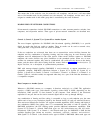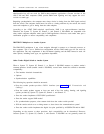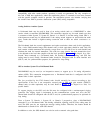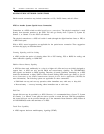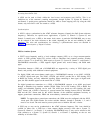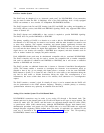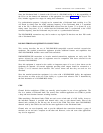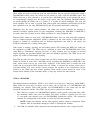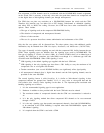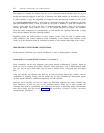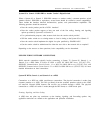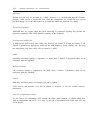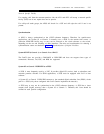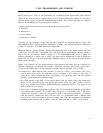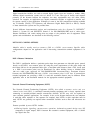
NETWORK CONNECTIONS AND CONFIGURATIONS
2-11
The assignment of CEM channels must be coordinated with the DS1/DMI-BOS channel assignments
on the switch. This is necessary so that only voice and voice-grade data channels are compressed and
so that digital data or 24th-signaling channels pass through uncompressed.
The CEM does not place any restriction on a DS1/DMI-BOS between the switch and the CEM.
Therefore, this interface may use either D4 or ESF framing, 24th-channel or robbed-bit signaling,
and either ZCS or B8ZS line coding. However, the CEM does have other considerations and
options. These include:
●
The type of signaling used on the compressed DS1/DMI-BOS facility
●
●
●
The selection of compressed and uncompressed channels
The use of echo cancelers
The use of a processor that allows remote administration and maintenance of the CEM
Only the first two options will be discussed here. The other options, along with additional specific
information, may be obtained from CEM: Description, Installation, and Maintenance (365-287-100).
Two types of mutually exclusive signaling are used with the compressed DS1 facility between the two
CEMs. These signaling types are different from the signaling types used by DS1/DMI-BOS. The
first type of signaling is variable bit-robbed (VBR). It is similar to RBS in that it is an inband type of
signaling. The VBR type is sometimes also called RBS, even though it is a different type from that
associated with DS1/DMI-BOS. When VBR signaling is used:
●
●
●
●
VBR signaling is the default signaling type supplied with the basic CEM unit
VBR signaling is the only signaling type that allows a DS1 facility to carry the maximum of 48
compressed voice or voice-grade data channels
Tandem connections (over several DS1/DMI facilities) can significantly affect signal quality
All uncompressed channels (that is, digital data channels and the 24th signaling channel) must be
provided on the same DS1/DMI
The second signaling format is called bundling. It is similar to 24th-channel signaling in that
compressed channels are grouped into "bundles" of 12; 11 carry voice or voice-grade data and the
12th (called a delta channel) carries signaling for the other 11. The important points associated with
bundling signaling are as follows:
1.
2.
3.
4.
5.
6.
It is the recommended signaling type for most applications
Hardware in addition to that provided with the basic CEM unit must be ordered
The maximum number of compressed channels that the CEM can accommodate is reduced to
44
It is the only signaling method that allows compressed DS1 channels to be cross-connected
through a DACS
It is the only signaling type that permits uncompressed channels, from both DS1/DMI-BOSes,
to be connected to the CEM. Bundling is required when both DS1/DMI-BOSes operate with
24th-channel signaling.
It is required when the CEM is used with a CDM



